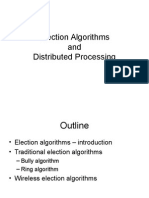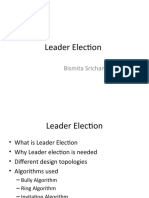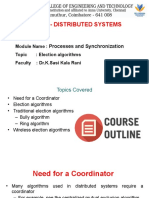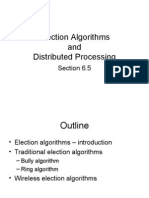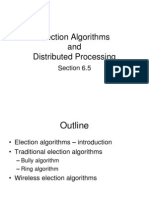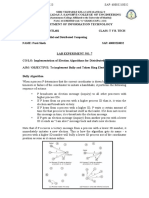0% found this document useful (0 votes)
5 views15 pagesElection Algorithm
The document outlines election algorithms used to select a coordinator in distributed systems, specifically the Bully and Ring algorithms. The Bully algorithm involves processes with unique IDs where the highest ID process initiates an election if it detects a failure, while the Ring algorithm organizes processes in a logical ring and sequentially polls neighbors to find the highest ID. Both algorithms ensure a new coordinator is elected when the current one fails, with the Bully algorithm requiring O(n^2) messages in worst-case scenarios.
Uploaded by
sajibuddin163Copyright
© © All Rights Reserved
We take content rights seriously. If you suspect this is your content, claim it here.
Available Formats
Download as PPTX, PDF, TXT or read online on Scribd
0% found this document useful (0 votes)
5 views15 pagesElection Algorithm
The document outlines election algorithms used to select a coordinator in distributed systems, specifically the Bully and Ring algorithms. The Bully algorithm involves processes with unique IDs where the highest ID process initiates an election if it detects a failure, while the Ring algorithm organizes processes in a logical ring and sequentially polls neighbors to find the highest ID. Both algorithms ensure a new coordinator is elected when the current one fails, with the Bully algorithm requiring O(n^2) messages in worst-case scenarios.
Uploaded by
sajibuddin163Copyright
© © All Rights Reserved
We take content rights seriously. If you suspect this is your content, claim it here.
Available Formats
Download as PPTX, PDF, TXT or read online on Scribd
/ 15









